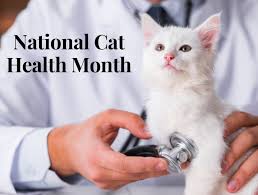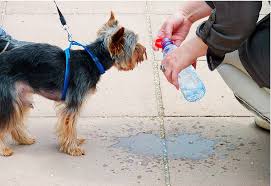Jun is National Pet Preparedness Month. Here’s your guide for ensuring your pet is safe and cared for during an unexpected emergency.
National Pet Preparedness Month
June is National Pet Preparedness Month, a time dedicated to ensuring that pet owners are equipped to handle any emergencies that may arise. As responsible pet owners, it is important to have a plan in place for your pets in case of disasters such as natural disasters, fires, or medical emergencies. By taking the time to create a checklist and prepare for the unexpected, you can help ensure your pet’s safety and well-being during times of crisis.
Creating a pet preparedness checklist involves gathering essential items such as food, water, medication, and important documents for your pet. It also involves having a plan in place for how to evacuate with your pet and where to go in case of emergency. By being proactive and prepared, you can minimize stress and confusion for both you and your pet during emergencies. Stay tuned for our guide on the best checklist to prepare your pet for any situation during National Pet Preparedness Month.

Create an Emergency Plan for Your Pet
If you have an emergency plan for your family, then you have a starting place to create one for your pet. But it might not be as simple as assuming the family pet will come with you wherever you go. Here’s what to consider when designing an emergency plan for your pet:
- Find out what shelters might be available in a disaster and understand their pet policy
- Identify hotels in surrounding areas that accept pets
- Prepare a list of possible locations for your pet to evacuate with or without you
- Remember that you may have to separate your animals
- Use your resources to create a solid plan
Emergency Shelters Often Don’t Allow Pets
When it comes to planning for emergencies, one important thing to consider is what will happen to your beloved pets. Many pet owners may not realize that during a disaster or emergency situation, emergency shelters often do not allow pets. This can leave pet owners in a difficult position, wondering where to turn with their pets in tow.
It’s important to understand why many emergency shelters have restrictions on pets. The primary reason is to ensure the safety and well-being of all individuals who seek shelter during a crisis. Allergies, fear, and potential conflicts between animals are just a few reasons why pets might not be allowed in these facilities. Additionally, shelters may not have the resources to provide for animals in terms of food, water, and shelter.
So what can pet owners do if they find themselves in need of emergency shelter during a disaster? The best course of action is to plan ahead. Research pet-friendly shelters in your area and have a plan in place for where you and your pets will go if you need to evacuate. Contact local animal shelters, veterinarians, or boarding facilities to see if they can provide temporary housing for your pets in the event of an emergency.
If you are unable to find a suitable solution for your pets during an emergency, consider reaching out to pet rescue organizations or animal welfare groups in your area. These organizations may be able to assist with temporary shelter or finding a foster home for your pets until you are able to be reunited with them.

Keep a List of Pet Friendly Hotels in Surrounding Areas
During an emergency or natural disaster, it’s essential to have a plan in place for your pets. In the event that you need to evacuate your home, it’s important to know where you can go with your pets. That’s why it’s a good idea to keep a list of pet-friendly hotels in surrounding areas.
When researching pet-friendly hotels, there are a few important things to keep in mind. Firstly, make sure to look for accommodations that not only allow pets but also have specific amenities for them. Some hotels may have designated pet areas, pet-friendly rooms, or even pet sitting services. These types of accommodations can help make you and your pet more comfortable during a stressful situation. Another factor to consider when choosing a pet-friendly hotel is the pet policy. Some hotels may have restrictions on the size, breed, or number of pets you can bring. It’s important to be aware of these policies beforehand, so you can make sure they align with your pet’s needs.
When compiling your list of pet-friendly hotels, make sure to include important information such as the hotel name, address, phone number, and pet policy. Having all of this information readily available will make it easier for you to make a quick decision when the time comes to evacuate.
Consider Other Evacuation Options for Your Animal
During times of disaster, it’s important to have a plan in place for evacuating not only your family, but also your pets. While many people may think of evacuation shelters as the only option for their pets, it’s important to consider other options as well. One alternative to traditional evacuation shelters is to plan ahead and find pet-friendly hotels or motels in the area where you can stay during a disaster. Many hotels are now welcoming pets during emergency situations, so it’s a good idea to research and make a list of these pet-friendly accommodations near your home and along your evacuation route
Don’t Risk Your Pets’ Lives to Keep Them Together
When disaster strikes, it can be a chaotic and stressful time for everyone, including our beloved pets. While it is natural to want to keep our pets close to us, it is important to prioritize their safety above all else during emergencies.
One common mistake that many pet owners make during disasters is attempting to keep all of their pets together at all costs. While it may seem like the best option to keep your pets in one location, this can actually put them at greater risk. Different animals may have different needs or behaviors during stressful situations, and keeping them together can lead to increased anxiety and potential fights between pets.
Another important consideration is that some pets may require specialized care or accommodations during emergencies. For example, elderly pets, pets with medical conditions, or small animals may need extra attention or supplies to ensure their safety and well-being. By attempting to keep all of your pets together, you may inadvertently neglect the specific needs of individual animals, putting their lives at risk.
Consult Local Resources for Additional Solutions
During National Pet Preparedness Month, it’s important to make sure you’re fully equipped to care for your furry friends in case of an emergency. While you may have already taken the necessary steps to ensure you have a pet emergency kit and a plan in place, there are always additional resources available to help you better prepare for any situation that may arise.
One of the best ways to find additional solutions for pet preparedness is by consulting with local resources. Local animal shelters, veterinarians, and pet stores are great places to start when looking for more information on how to keep your pet safe during an emergency.
Animal shelters are often well-versed in disaster preparedness and can provide valuable tips and advice on how to best care for your pet in a variety of emergency scenarios. They may also have resources available for pet owners, such as emergency boarding services or pet-friendly evacuation centers.
Veterinarians are another great resource for pet preparedness. Not only can they provide guidance on how to keep your pet healthy and safe in an emergency, but they can also recommend specific products or medications that may be necessary for your pet’s well-being during a crisis. They can also help you create a medical emergency plan for your pet, including keeping copies of medical records handy and having a list of emergency contact numbers readily available.
Pet stores are also a valuable resource for pet owners looking to better prepare for emergencies. Many pet stores carry emergency supplies such as first aid kits, pet carriers, and emergency food and water supplies. They may also have information on pet-specific emergency training classes or workshops that can help you feel more confident in your ability to care for your pet during a crisis.
By consulting with local resources for additional solutions, you can ensure that you have all the information and tools necessary to keep your pet safe in any situation. Whether it’s creating a comprehensive emergency plan, stocking up on necessary supplies, or learning valuable skills to care for your pet during a crisis, these resources can provide you with the support and knowledge you need to be fully prepared for whatever comes your way. Remember, your pet relies on you to keep them safe and secure, so take the time to consult with local resources and make sure you have everything you need to protect your pet in an emergency.

Assemble a Pet Preparedness Kit National Pet Preparedness Month
A pet preparedness kit is a simple, easy-to-gather collection of items that can potentially save your pet’s life in an emergency. Some people create two kits: a smaller one for easy evacuation and a larger one for sheltering in place. Your pet preparedness kit should include:
- The basics: food, water, and medication
- A pet first aid kit (that includes current vaccination info)
- Additional supplies like a collar, identification tag, leash
- Toileting and grooming items
- At least one comfort item for your animal
- A photograph of you with your pet
The Fundamentals: Seven Days of Food, Water, and Medicine
As responsible pet owners, it is crucial to have a plan in place for our pets in case of an emergency. National Pet Preparedness Month serves as a reminder to ensure we are equipped to care for our pets during unforeseen circumstances. One of the most important aspects of this preparedness is having enough supplies on hand to last at least seven days in case of evacuation or isolation.
Food, water, and medicine are the three essential items that must be included in your pet emergency kit. When preparing for your pet, ensure you have enough food to last for at least a week. It is important to store your pet’s food in a waterproof container to keep it fresh and easily accessible. Don’t forget to include any special dietary needs your pet may have, such as prescription diets or treats.
Water is just as essential as food for your pet’s survival. In an emergency situation, access to clean water may be limited, so it is crucial to have enough water stored for your pet to stay hydrated. The general rule of thumb is to have at least one gallon of water per day for each pet.
Medication is another essential item to include in your pet’s emergency kit. Ensure you have a sufficient supply of any medications your pet may require, as well as any medical records or prescriptions. Keeping your pet’s medications organized and easily accessible will make a stressful situation a little easier to manage.
In addition to these three essentials, it is also important to include other items that will make your pet more comfortable during an emergency. This can include bedding, toys, and familiar items that will help reduce stress and anxiety for your pet. A first aid kit specifically designed for pets is also essential, as well as a pet carrier or crate for safe transportation.

What to Include in a Pet First Aid Kit
When it comes to preparing for emergencies, having a first aid kit handy is crucial for the health and safety of your pets. Just like you would have a first aid kit for yourself and your family, it’s important to have one specifically for your pets.
So, what exactly should you include in a pet first aid kit? Let’s break it down.
One of the most important items to have in your pet first aid kit is a basic first aid manual for pets. This will guide you on how to handle common pet emergencies and provide step-by-step instructions on administering first aid.
National Pet Preparedness Month Keep Extras of Your Pet’s ID Tag, Collar, and Leash
When it comes to preparing your pet for emergencies, having multiples of key items like their ID tag, collar, and leash can make a big difference in keeping them safe and secure.
National Pet Preparedness Month let’s talk about the importance of your pet’s ID tag. This small but critical item contains essential information such as your contact details and your pet’s name. In case your pet gets lost during an emergency situation, having a backup ID tag can greatly increase the chances of them being reunited with you. Make sure the information on the tags is current and up to date. If your pet has a medical condition or requires special care, consider including that information on their tags as well.
Leashes are another crucial item to have backups of. Leashes are essential for controlling your pet and keeping them safe during emergencies. If your pet’s leash were to break or get lost, having spare leashes can ensure that you can still safely guide your pet through any situation. Look for sturdy, durable leashes that are comfortable for both you and your pet to hold. Consider having different types of leashes, such as a short leash for close control and a longer leash for more freedom of movement.

By keeping extras of your pet’s ID tag, collar, and leash on hand, you can be better prepared to keep your pet safe during emergencies. These small but essential items can make a big difference in ensuring that your pet is reunited with you and stays secure in any situation. Take the time to gather these supplies now so that you can have peace of mind knowing that you’re ready to care for your pet no matter what comes your way.
A Kit Should Include Toileting and Grooming Items
When preparing a kit for your pet during emergencies or disasters, it’s important to not overlook toileting and grooming items. Keep a supply of your pet’s regular toileting essentials on hand. This includes items such as poop bags, litter for cats, and puppy pads for dogs. These items are necessary to ensure your pet can relieve themselves comfortably and cleanly, even if you are in a temporary shelter or on the go.
Consider adding some portable options for toileting to your kit. Disposable litter boxes or portable putty pads can be a lifesaver when you’re unable to find a suitable spot for your pet to go. These options are easy to set up and dispose of, making them ideal for emergency situations National Pet Preparedness Month
.
Grooming items are also essential to include in your pet emergency kit. Just like us, pets can get dirty or tangled fur, especially in stressful situations. Having a brush or comb on hand can help keep your pet’s coat clean and free of mats. Additionally, consider packing some pet-safe wipes for quick clean-ups of paws or faces.
If your pet has specific grooming needs, such as needing regular baths or nail trims, make sure to include the necessary items in your kit. This could include pet shampoo, nail clippers, or a towel for drying off. Keeping your pet clean and groomed not only helps they feel comfortable, but it can also prevent skin infections and other issues that can arise from poor hygiene National Pet Preparedness Month
.
If there’s Room, Comfort Items Can Reduce Stress
When preparing for a disaster or emergency situation with your pet, it’s important to consider their emotional well-being as well as their physical needs. One way to help reduce stress for your pet during a difficult time is to include comfort items in your pet preparedness kit National Pet Preparedness Month
.
If you have the space and resources, including items that your pet finds comforting can go a long way in helping them stay calm and feel secure. This can be especially important in high-stress situations like natural disasters or evacuations, where you’re pet may be feeling scared or uncertain National Pet Preparedness Month
.
One comfort item that many pets find soothing is a familiar blanket or bedding. Having something familiar to snuggle up with can help your pet feel safe and secure, even in unfamiliar surroundings. Consider including a favorite blanket or bed in your pet preparedness kit, along with any other bedding or items that your pet enjoys.
National Pet Preparedness Month Other Tips for Staying Prepared
- Your pet should be comfortable with the carrier
- Keep vaccinations and records up to date at all times
- Micro chipping is even more important during an emergency
- Add a sticker alert to your door for rescue workers
- Keep the whole family (and possibly neighbors) informed about your emergency plan
Be Sure Your Pet Is Carrier-Trained
Carrier training is essential for a variety of reasons. In the event of an evacuation, you may need to quickly and safely transport your pet to a temporary shelter or vet’s office. A carrier provides a secure and familiar space for your pet in an unfamiliar and potentially chaotic environment. It also helps prevent your pet from becoming lost or injured during transport National Pet Preparedness Month
.
Maintain Updated Vaccination Records for All Pets
Maintaining updated vaccination records for all pets is an essential part of being a responsible pet owner. Just like humans need vaccines to protect them from diseases, our pets also require vaccinations to keep them healthy and safe?
Vaccinations are crucial because they protect pets from serious and sometimes life-threatening illnesses. By ensuring that your pets are up to date on their vaccinations, you are not only protecting them but also helping to prevent the spread of infectious diseases to other animals National Pet Preparedness Month
.
Micro chipping can be Life-Saving in an Emergency
One of the most important things you can do to ensure your pet’s safety during an emergency is to have them microchipped. A microchip is a small, electronic device that is implanted under your pet’s skin, usually between the shoulder blades. It contains a unique identification number that can be scanned by a special device to retrieve your contact information National Pet Preparedness Month
.
In the event that your pet ever gets lost or separated from you during a disaster, having a microchip can be life-saving. Many pets that end up in shelters or veterinary clinics without proper identification can be scanned for a microchip. If your pet has a microchip, the facility will be able to contact you and reunite you with your beloved companion. This is especially crucial during a time of crisis when normal communication channels may be disrupted National Pet Preparedness Month
.
Alert Rescue Workers of Your Pet’s Presence
In the event of a natural disaster or emergency situation, it is crucial to make sure that rescue workers are aware of your pet’s presence. This will help ensure that your pet is not left behind and can be safely reunited with you after the crisis has passed. There are a few key steps you can take to alert rescue workers to your pet’s presence and increase the chances of a successful reunion.
Make sure that your pet is wearing a collar with identification tags. This will make it easier for rescue workers to identify your pet and contact you if they are found. You may also want to consider having your pet microchipped, as this provides an additional layer of identification that cannot be lost or removed. Make sure that your pet’s microchip information is up to date and includes your current contact information National Pet Preparedness Month
.
Keep the Family and Neighbors Updated on Your Emergency Plan
When it comes to preparing your pet for emergencies, communication is key. Make sure to keep your family and neighbors updated on your emergency plan so that everyone knows what to do in case of an unexpected situation National Pet Preparedness Month
.
Make sure that all members of your household are aware of the emergency plan for your pet. This includes knowing where your pet’s emergency kit is located, who is responsible for grabbing it in case of an evacuation, and what the plan is for transporting your pet to safety. It’s important that everyone in your household is on the same page so that there is no confusion when an emergency arises.
FAQ: What is National Pet Preparedness Month?
Answer: National Pet Preparedness Month is observed in June each year and is dedicated to raising awareness about the importance of emergency preparedness for pets.
FAQ: Why is it important to include pets in emergency preparedness plans?
Answer: Pets are vulnerable during emergencies like natural disasters or evacuations. Including them in your preparedness plans ensures their safety and well-being during times of crisis
.FAQ: How can I prepare my pet for emergencies?
Answer: Prepare an emergency kit with essentials such as food, water, medications, and copies of medical records. Have a plan for evacuation or sheltering in place, and ensure your pet’s identification is up to date.
FAQ: What should be included in a pet emergency kit?
Answer: A pet emergency kit should include at least three days’ worth of food and water, medications, medical records, a first aid kit, collar with ID tags, leash or carrier, and comfort items like blankets or toys.
FAQ: How can I find pet-friendly shelters or accommodations during emergencies?
Answer: Research pet-friendly shelters or hotels in advance, and keep a list of their contact information. During emergencies, local authorities or animal welfare organizations may also provide information on pet-friendly options.
Conclusion:
National Pet Preparedness Month important to remember that our pets rely on us for their safety and well-being in times of emergency. By following the checklist provided in this article and preparing ahead of time, you can ensure that your pet is taken care of in the event of a disaster. Remember, being prepared can make all the difference for both you and your beloved companion. Stay safe, stay informed, and make sure your pet is part of your emergency plan.

Leave A Comment